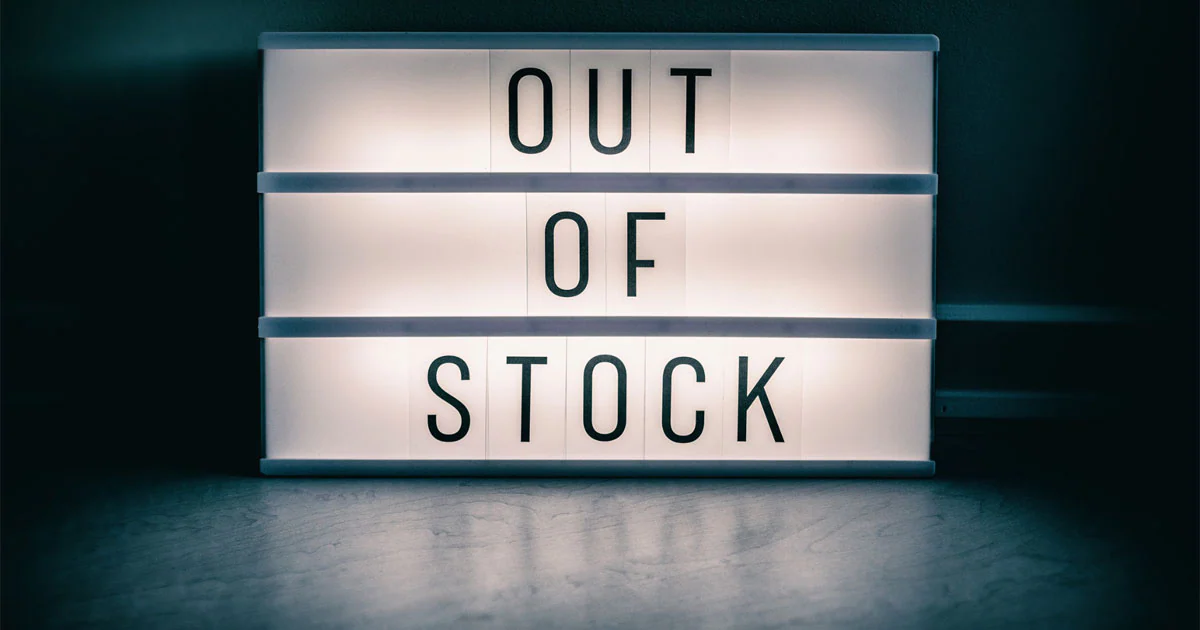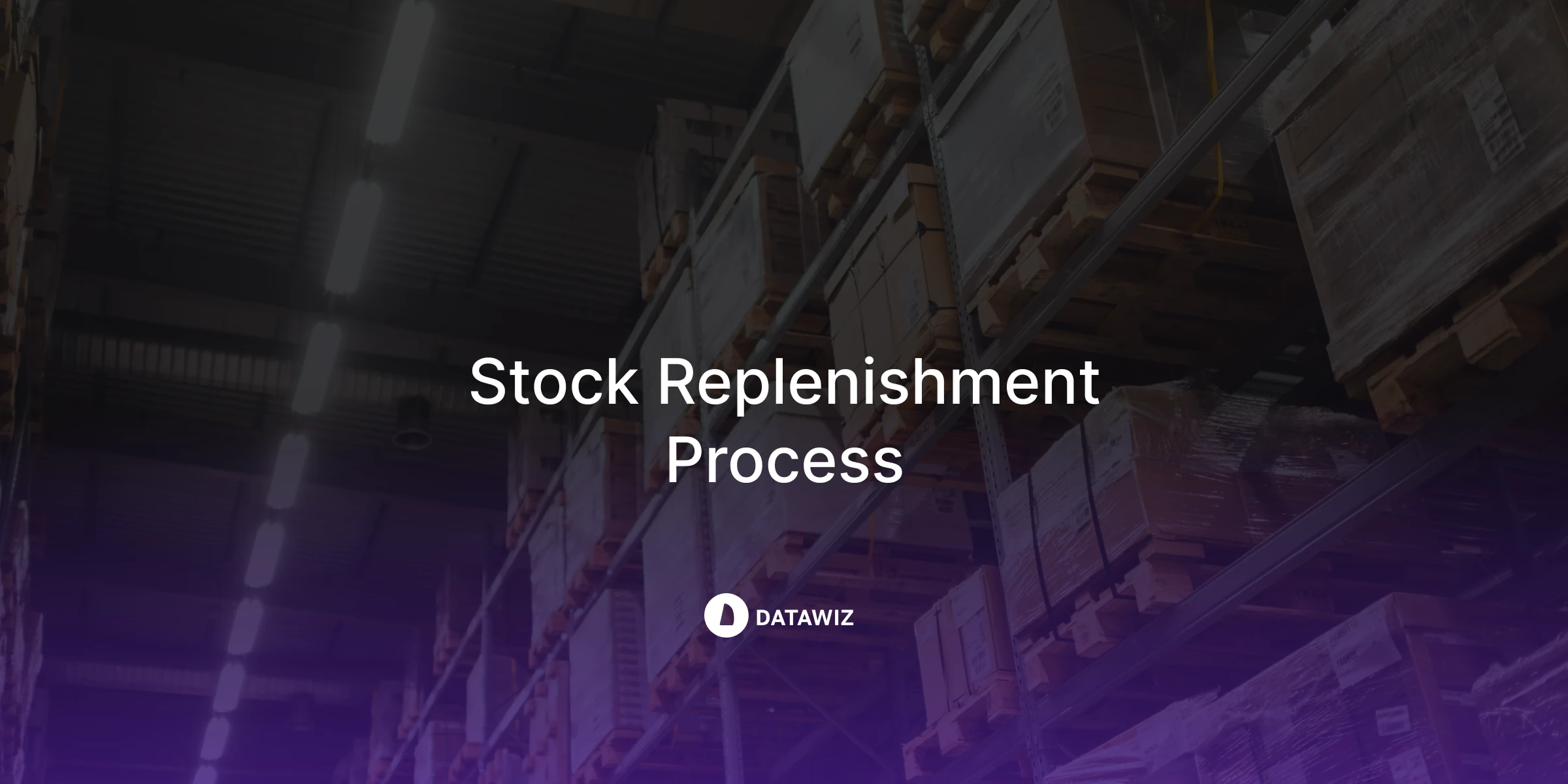Lost Sales: How to Prevent Out-of-Stock?
Out-of-stocks(OoS) are items that are not on the shelves of the store. As a result of this situation, buyers cannot procure goods, and the chain loses its revenues and profits.
According to experts, modern companies lose about 3% of their profits annually due to out-of-stock. Such a problem is especially relevant today when every retail chain is dealing with logistical difficulties because of economic and political events in the world.

What are the causes of out-of-stocks?
Among the huge list, we highlight the most important reasons for the occurrence of out-of-stock:
- the value of the minimum commodity stock (insurance stock) is incorrectly calculated;
- unpredictable increase in demand for individual product items;
- untimely delivery of goods by suppliers;
- lack money to buy the desired quantity of goods;
- the order was placed by the manager late.

What are the consequences of out-of-stock?
Stockouts in the store can lead to:
- Lost profit: if there is an OoS for a specific good position, then the store does not receive the expected revenue, and therefore reduces its level of profitability;
- Lost buyer: in the absence of a product, the buyer tries to find a replacement for it among similar products or chooses another store.
- Lost customer loyalty: If the good is not in the store regularly, then the buyer can permanently change the store or brand.

The results of FMCG research regarding the behavior of buyers in the stockouts of the desired good showed:
- 45% of customers will purchase another similar good;
- 15% - postpone the purchase,
- 40% - will make a purchase elsewhere or refuse to purchase.
Example! There is no product A in the chain for 4 days (Days). On average, it is sold 7 times per day (Avg Sales Qty), for $5 (Price), which includes a cost price of $3 and a profit of $2.
Lost sales (revenue) = Days * Avg Sales Qty * Price = 4 * 7 * 5 = $140
Lost profit = Days * Avg Sales Qty * Profit = 4 * 7 * 2 = $56
And this is lost profit from the absence of only one product item. But what if there are several such out-of-stock goods in the chain?

How to avoid stockouts?
The main task for each chain is to provide a sufficient number and assortment of goods on store shelves at the right time for customers.
Studies conducted by the Center for Retail Research have shown that only 30-40% of stockouts are caused by errors in the layout of goods and the remaining 60-70% by late deliveries from the supplier.
Therefore, today special attention should be paid to establishing cooperation with responsible suppliers. If it is difficult to influence the timely and high-quality fulfillment of agreements by suppliers, then it is possible to avoid mistakes of chain workers.

Consider a step-by-step analysis of goods that need to be ordered.
Step 1. Sales analysis and demand forecasting
It is important to understand how quickly each product item is sold, and how popular it is. To do this, analyze the following indicators for the last 3-6 months:
- Sales Qty;
- Turnover;
- Stock Qty at the end of the day;
- Inventory turnoverratio;
- Days sales in inventory;
- Average turnover (sales Qty) per day.
Note! It is necessary to take into account the seasonal increase or decrease in demand for particular goods.
Step 2. Forecasting the date when the stocks of goods go out
To predict when goods will be out of stock, you need to use the formula:
Number of days before the goods go out = Cost of stock at the end of the day / Avg turnover per day
Number of days before goods go out = Qty of stock at the end of the day / Avg sales Qty per day
Example!The stock of good A at the end of 8th of August - $1500. The average daily turnover for the previous three months is $120. When will the stock of good A equal zero?
Number of days before the goods go out = 1500 / 120 = 12.5 days
The date of product A go out is 23rd of August.
Therefore, the chain should order the goods in time, taking into account the delivery period. By controlling the OoS date, category managers can place orders on time and avoid zero stocks.
Step 3: Analysis of supply safety
Supply safety is a supplier reliability parameter:
Supply safety = Cost (Qty) of received goods / Cost (Qty) of ordered goods * 100%
Supply safety analysis for each SKU will allow you to assess the reliability of the supplier and in the future to more accurately determine the time and volume of orders. In addition, if significant and stable differences between this indicator and the normative value (100%) are identified, the issue of stopping cooperation with an unreliable supplier should be considered.
Fast and accurate analysis with BI.Datawiz
It is quite difficult to perform the described analytical steps for each good manually. We bring to your attention the report "Prediction of OoS" on the analytical platform for retailers BI.Datawiz.

The functionality of the report will help you in several minutes:
- identify the goods of the main assortment, the stocks of which should be urgently ordered;
- correctly calculate the size of the minimal stocks for each product item;
- visually track the dynamics of sales and stocks for bestseller goods to prevent out-of-stock;
- identify unreliable suppliers with whom to finish cooperation;
- avoid losses in sales due to the stockouts of popular products.
The absence of shortages on the shelves is the key to the success of your business!
 What's new?
What's new?





 No credit card required
No credit card required